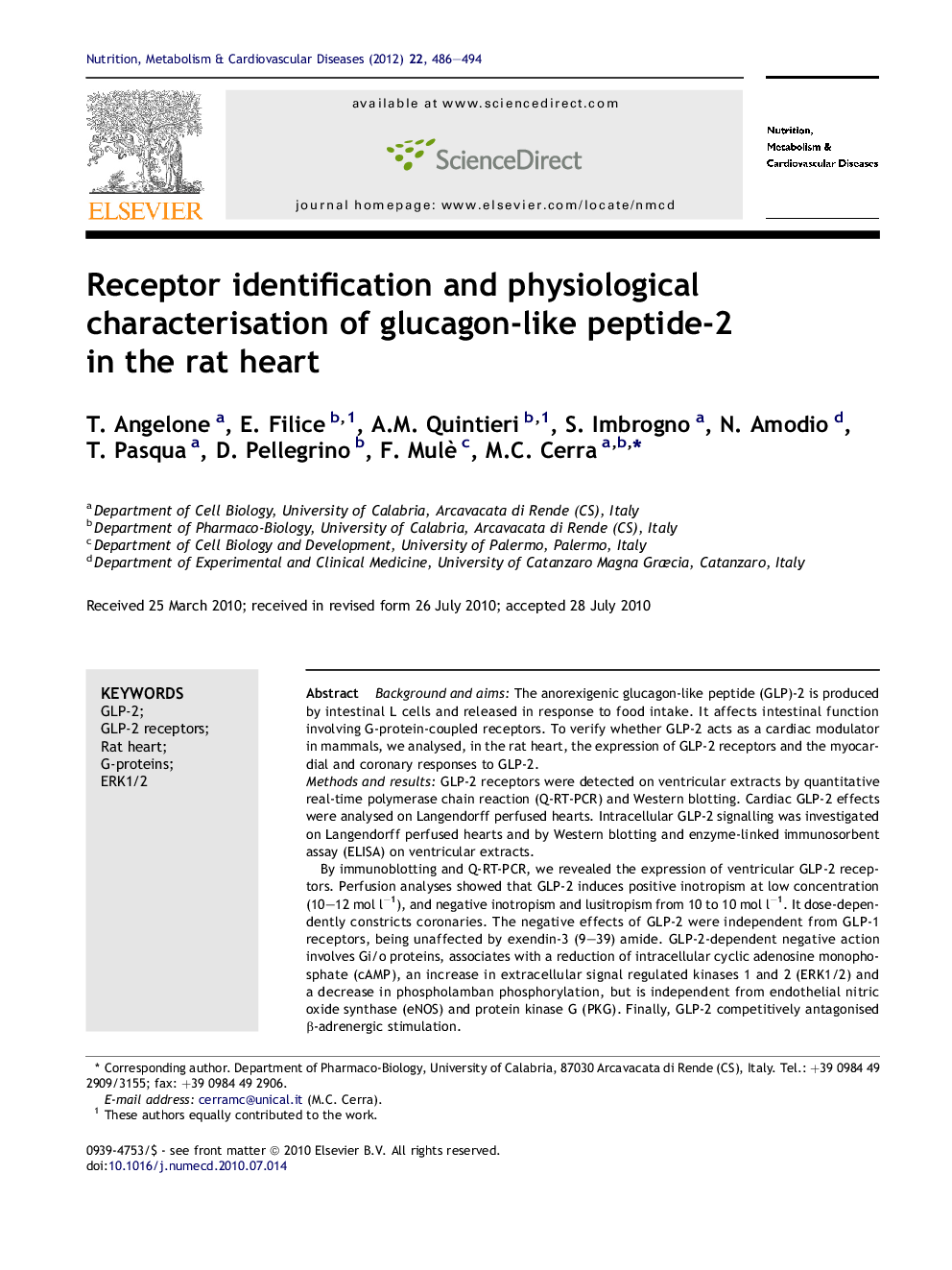| کد مقاله | کد نشریه | سال انتشار | مقاله انگلیسی | نسخه تمام متن |
|---|---|---|---|---|
| 3002548 | 1180732 | 2012 | 9 صفحه PDF | دانلود رایگان |

Background and aimsThe anorexigenic glucagon-like peptide (GLP)-2 is produced by intestinal L cells and released in response to food intake. It affects intestinal function involving G-protein-coupled receptors. To verify whether GLP-2 acts as a cardiac modulator in mammals, we analysed, in the rat heart, the expression of GLP-2 receptors and the myocardial and coronary responses to GLP-2.Methods and resultsGLP-2 receptors were detected on ventricular extracts by quantitative real-time polymerase chain reaction (Q-RT-PCR) and Western blotting. Cardiac GLP-2 effects were analysed on Langendorff perfused hearts. Intracellular GLP-2 signalling was investigated on Langendorff perfused hearts and by Western blotting and enzyme-linked immunosorbent assay (ELISA) on ventricular extracts.By immunoblotting and Q-RT-PCR, we revealed the expression of ventricular GLP-2 receptors. Perfusion analyses showed that GLP-2 induces positive inotropism at low concentration (10–12 mol l−1), and negative inotropism and lusitropism from 10 to 10 mol l−1. It dose-dependently constricts coronaries. The negative effects of GLP-2 were independent from GLP-1 receptors, being unaffected by exendin-3 (9–39) amide. GLP-2-dependent negative action involves Gi/o proteins, associates with a reduction of intracellular cyclic adenosine monophosphate (cAMP), an increase in extracellular signal regulated kinases 1 and 2 (ERK1/2) and a decrease in phospholamban phosphorylation, but is independent from endothelial nitric oxide synthase (eNOS) and protein kinase G (PKG). Finally, GLP-2 competitively antagonised β-adrenergic stimulation.ConclusionsFor the first time, to our knowledge, we found that: (1) the rat heart expresses functional GLP-2 receptors; (2) GLP-2 acts on both myocardium and coronaries, negatively modulating both basal and β-adrenergic stimulated cardiac performance; and (3) GLP-2 effects are mediated by G-proteins and involve ERK1/2.
Journal: Nutrition, Metabolism and Cardiovascular Diseases - Volume 22, Issue 6, June 2012, Pages 486–494